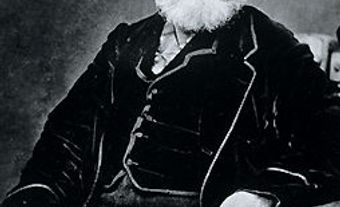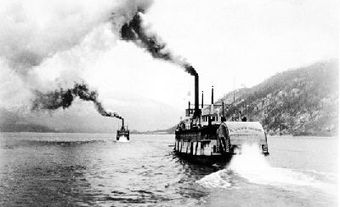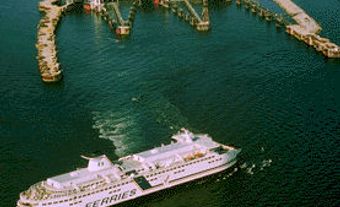Icebreakers
Canada has had an icebreaker capability for over 100 years. Indeed, one of the promises of Confederation - a guaranteed year-round ferry service between Prince Edward Island and the mainland - resulted between 1876 and 1899 in the construction of 3 small icebreaking FERRIES. At the turn of the century Canada's first full icebreakers, the Champlain and Montcalm, were built to break up ice barriers and dams that caused annual flooding at narrow points along the ST LAWRENCE RIVER.Icebreakers were first used in the Canadian Arctic in the 1920s to deliver supplies and services to Native and isolated settlements during the short summer season, and to back up claims of Canadian sovereignty over the NORTHWEST PASSAGE and ARCTIC ARCHIPELAGO. In the 1930s the port of Churchill was opened for grain shipments, and in 1957 the government undertook the annual supply of Distant Early Warning (DEW) line sites across the Arctic.
Canada, like all nations with icebreakers (Argentina, Finland, Sweden, Japan, W Germany, the US and
Heavy icebreakers in the CCG fleet generally operate in southern waters in the winter months and the Arctic during the summer. Though the Louis S. St. Laurent has worked in Hudson Bay in Dec, no serving Canadian icebreaker is able to penetrate Canadian Arctic water during the severe winter season from November to May.
Canada's future need for advanced icebreakers is not likely to be as large as that of Russia. The composition of Canada's icebreaker fleet depends on the level of demand for their services in ice-covered waters. For example, the transportation of oil and gas from the Arctic by water would result in a considerable increase in the icebreaking capability in Canada.

 Share on Facebook
Share on Facebook Share on X
Share on X Share by Email
Share by Email Share on Google Classroom
Share on Google Classroom




